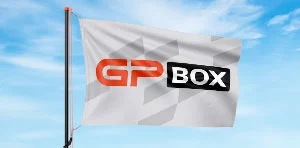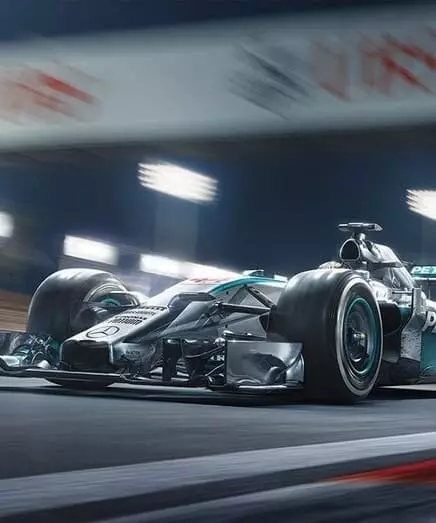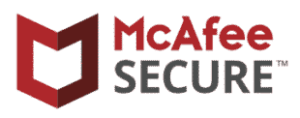Jaguar D-Type Ecurie Ecosse – 12h de Reims 1956. Limited and signed edition, poster, print, birthday, race
$63.75 – $92.00
- 0Ordered
- 0Dispatched
- 0Arrived
- Secure payment

Car related doesn't mean dirty. At GPBox, we pay monthly to offset the carbon footprint caused by our service.You can contribute $1 on top too!
Shop Reviews
This shop is worth finding, worth knowing and worth loving but buyers have still to leave a review.
Discover products with the peace of mind of hassle free returns and secure shopping!
Description
Poster printed on Fine Art Paper 188gr. A very high quality paper, suitable for high-end professional use. It has the highest level of image stability and is ideal for display purposes.
Exclusive Edition is a Belgian studio in the EU. We create posters dedicated to the world of motor racing.
We recreate car details and damage using graphics software.
Here are the characteristics of our posters:
- Limited edition of 50 copies
- Signed by the artist
- Numbered
- Secured by a Hologram
- Available in 3 sizes: 40 x 60 cm or 50 x 70 cm or 60 x 80 cm
- Printed on Fine Art Matt 188g paper
- Delivery included
Our posters will suit almost any interior - from the office or garage to the modern home or high-tech apartment.
Exceptional print quality and paper by using CAnon 12-color technology and high-end Fine Art Matt 190g matte paper.
The result offers vivid colors and fine, sharp lines. Automotive posters are printed with a resolution of 2400 DPI for maximum effect thanks to ultra-precise printheads.
Upon dispatch, each poster is carefully checked for printing defects and carefully packaged in a plastic sleeve and protected in a reinforced cardboard tube.
Other posters are available on the shop.
The Jaguar D-Type is a sports racing car that was produced by Jaguar Cars Ltd. between 1954 and 1957. Designed specifically to win the Le Mans 24-hour race, it shared the straight-6 XK engine and many mechanical components with its C-Type predecessor.
Its structure, however, was radically different, with innovative monocoque construction and slippery aerodynamics that integrated aviation technology, including in some examples a distinctive vertical stabilizer.
Engine displacement began at 3.4 litres, was enlarged to 3.8 L in 1957, and reduced to 3.0 L in 1958 when Le Mans rules limited engines for sports racing cars to that maximum. D-Types won Le Mans in 1955, 1956 and 1957.
After Jaguar temporarily retired from racing as a factory team, the company offered the remaining unfinished D-Types as street-legal XKSS versions, whose perfunctory road-going equipment made them eligible for production sports car races in America.
In 1957 25 of these cars were in various stages of completion when a factory fire destroyed nine of them.
Total production is thought by some to have totaled 71 D-Types, including 18 for factory teams and 53 for privateers (plus an additional 16 D-Types were converted into road-legal XKSS versions). Jaguar is quoted as claiming it built 75 D-Types.
The design applied aeronautical technology, revolutionary at the time. The “tub”, or cockpit section, was of monocoque construction, mostly comprising sheets of aluminium alloy. Its elliptical shape and comparatively small cross-section provided torsional rigidity and reduced drag.
To the front bulkhead was attached an aluminium tubing subframe for the engine, steering assembly, and front suspension. Rear suspension and final drive were mounted to the rear bulkhead.
Fuel was carried in the tail and the designers followed aviation practice by specifying a deformable Marston Aviation Division bag in place of a conventional tank.
Exclusive edition's policies
Shipping policy
Refund/Exchange policy
Accepted payment methods

More from this shop
Visit shop-
 Exclusive edition
Exclusive editionLancia Delta HF Integrale – Auriol & 0ccelli. Col de Turini. Limited and signed edition, poster, print, birthday, race, group b, rallye
$63.75 – $92.00 -
 Exclusive edition
Exclusive editionPorsche 935/K3 Apple, Dick Barbour Racing. Limited and signed edition, poster printed on art paper. Motor racing poster, decoration.
$63.75 – $92.00 -
 Exclusive edition
Exclusive editionJaguar D-Type Ecurie Ecosse – 12h de Reims 1956. Limited and signed edition, poster, print, birthday, race
$63.75 – $92.00 -
 Exclusive edition
Exclusive editionFerrari 312 T – Niki Lauda – Monaco 1975 – Loews turn. Limited edition, paper art print, poster, print, birthday, race, formula1
$63.75 – $92.00 -
 Exclusive edition
Exclusive editionLancia Delta HF Integrale – Auriol & 0ccelli. Col de Turini. Limited and signed edition, poster, print, birthday, race, group b, rallye
$63.75 – $92.00
Explore related searches

Jaguar D-Type Ecurie Ecosse – 12h de Reims 1956. Limited and signed edition, poster, print, birthday, race
$63.75 – $92.00
























